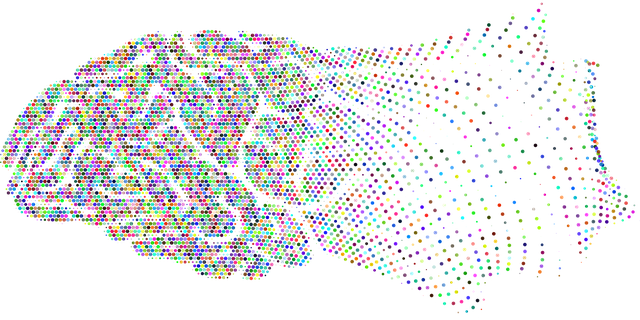Implementing effective Castle Rock Gender Identity Therapy requires collaboration with local organizations, thorough research, and identifying gaps in services, focusing on diverse demographics' unique challenges. Targeted outreach aims at transgender individuals, those questioning their identity, and those struggling with mental wellness due to societal pressures. A multifaceted approach includes podcasts, burnout prevention for healthcare providers, self-care routines, and journaling exercises. Effective communication channels tailor messages, build trust, incorporate community feedback, and advocate for funding. Success is measured qualitatively through inner strength development and positive thinking, with regular participant feedback to adapt and enhance program effectiveness.
“Community outreach is a powerful tool for organizations like Castle Rock Gender Identity Therapy to create meaningful change. This article explores the strategic implementation of outreach programs, focusing on understanding diverse community needs and designing inclusive strategies. We delve into effective communication channels, highlighting the importance of trust-building and tailored messaging. Additionally, we provide insights on measuring success and adapting programs based on evaluation metrics, ensuring ongoing impact and improvement in Castle Rock Gender Identity Therapy’s community engagement.”
- Understanding Community Needs: Identifying Gaps and Target Audiences for Castle Rock Gender Identity Therapy Programs
- Designing Inclusive Outreach Strategies: Techniques to Connect with Diverse Communities
- Implementing Effective Communication Channels: Reaching the Right People, Building Trust, and Sharing Resources
- Measuring Success and Adapting Programs: Evaluation Metrics and Continuous Improvement for Community Impact
Understanding Community Needs: Identifying Gaps and Target Audiences for Castle Rock Gender Identity Therapy Programs

Understanding the specific needs of Castle Rock’s diverse community is paramount when implementing gender identity therapy programs. By engaging with local organizations and conducting thorough research, therapists can identify gaps in existing services and tailor their approach to serve at-risk populations effectively. This process involves delving into the unique challenges faced by different demographics within Castle Rock, be it adolescents grappling with young adult transitions or older individuals newly exploring their gender identity.
Targeted outreach is crucial here. Castle Rock Gender Identity Therapy programs should aim to reach not just those openly identifying as transgender but also those who may be questioning, struggling with mental wellness as a result of societal pressures, or experiencing anxiety related to their identity. The community’s diverse tapestry demands a multifaceted approach. Incorporating strategies like the Mental Wellness Podcast Series Production can engage listeners on sensitive topics while Burnout Prevention Strategies for Healthcare Providers ensure that support is sustainable and accessible over time, addressing both the needs of the individual and the broader community’s mental health.
Designing Inclusive Outreach Strategies: Techniques to Connect with Diverse Communities

Implementing Effective Communication Channels: Reaching the Right People, Building Trust, and Sharing Resources

Implementing effective communication channels is a cornerstone of successful community outreach programs, particularly in specialized areas like Castle Rock Gender Identity Therapy. Reaching the right people involves tailoring messages to resonate with diverse communities, ensuring that information about available resources and support services reaches those who need them most. This requires a multi-faceted approach, leveraging various channels such as social media, local events, partnerships with community organizations, and direct mailers to maximize reach and engagement.
Building trust is paramount in fostering meaningful connections within the community. Transparent communication that clearly outlines service provisions, eligibility criteria, and confidentiality policies helps dispel misconceptions and cultivate a safe environment for individuals to seek support. Incorporating feedback from the communities served and adapting outreach strategies accordingly demonstrates responsiveness and commitment to addressing their unique needs. This iterative process not only strengthens trust but also ensures that resources are effectively allocated to promote mental wellness, as exemplified by initiatives such as Self-Care Routine Development for Better Mental Health and Mental Wellness Journaling Exercise Guidance. Additionally, engaging in Mental Health Policy Analysis and Advocacy can help ensure that community outreach programs receive adequate funding and support from local governments and policymakers.
Measuring Success and Adapting Programs: Evaluation Metrics and Continuous Improvement for Community Impact

Measuring success is a vital aspect of community outreach programs, allowing organizations like Castle Rock Gender Identity Therapy to gauge their impact and adapt strategies accordingly. Evaluation metrics should go beyond simple attendance numbers or short-term outcomes. Inner Strength Development and Positive Thinking are key components that contribute to long-lasting change. By collecting qualitative feedback from participants, healthcare providers can understand the depth of transformation, the acquisition of new skills, and the implementation of Burnout Prevention Strategies within their daily lives.
Regular assessment enables continuous improvement, ensuring programs remain effective and responsive to community needs. This iterative process allows for the refinement of activities and resources, maximizing benefits for all involved. By embracing these adaptations, organizations can foster sustainable growth and create a more significant, lasting impact on their communities.
Implementing community outreach programs for Castle Rock Gender Identity Therapy requires a nuanced approach that respects and embraces diversity. By understanding specific community needs, designing inclusive strategies, and utilizing effective communication channels, we can connect with diverse audiences and build trust. Continuous evaluation and adaptation based on success metrics ensure these programs have a lasting impact, fostering an environment where everyone feels seen, heard, and supported.














